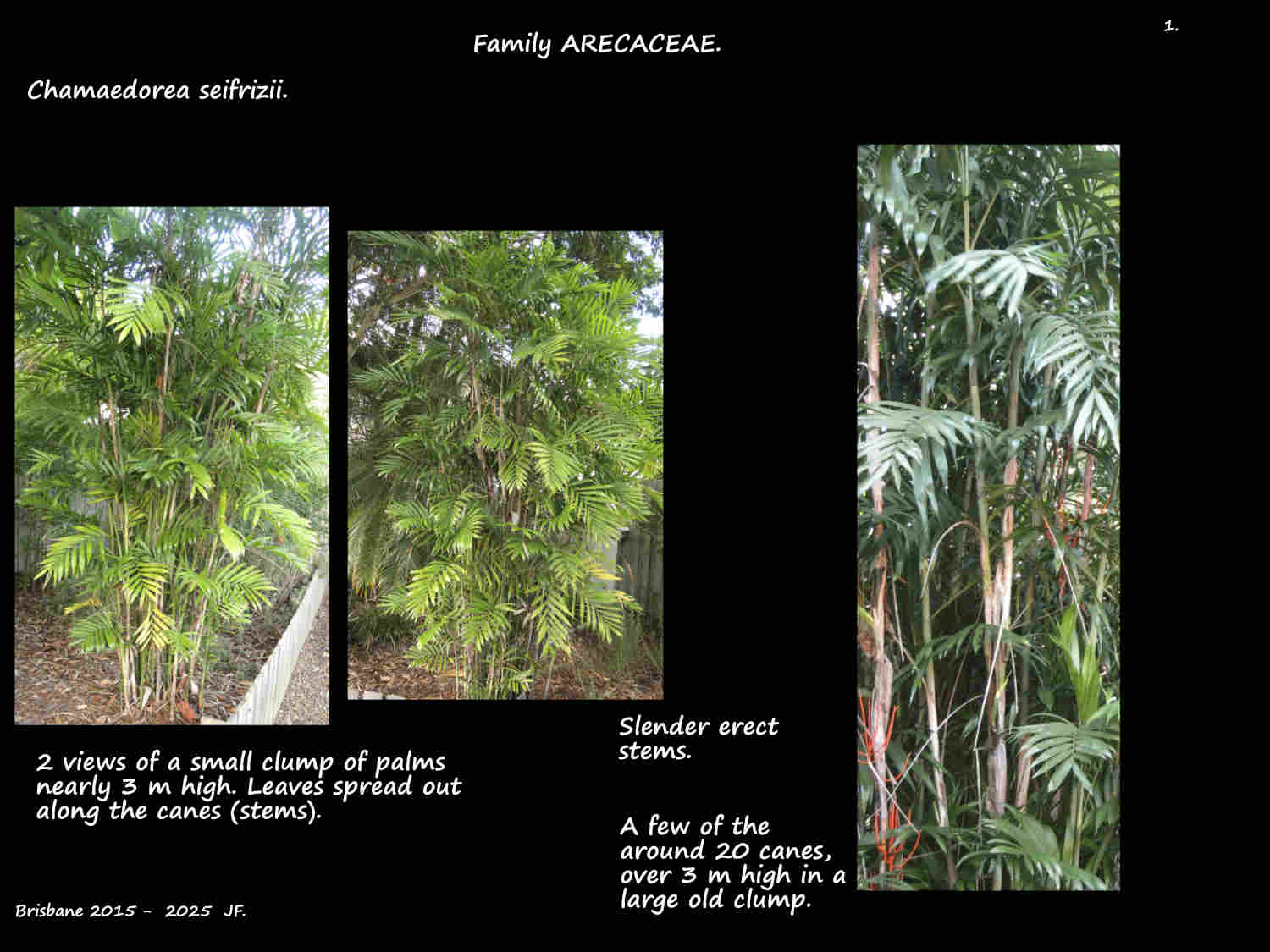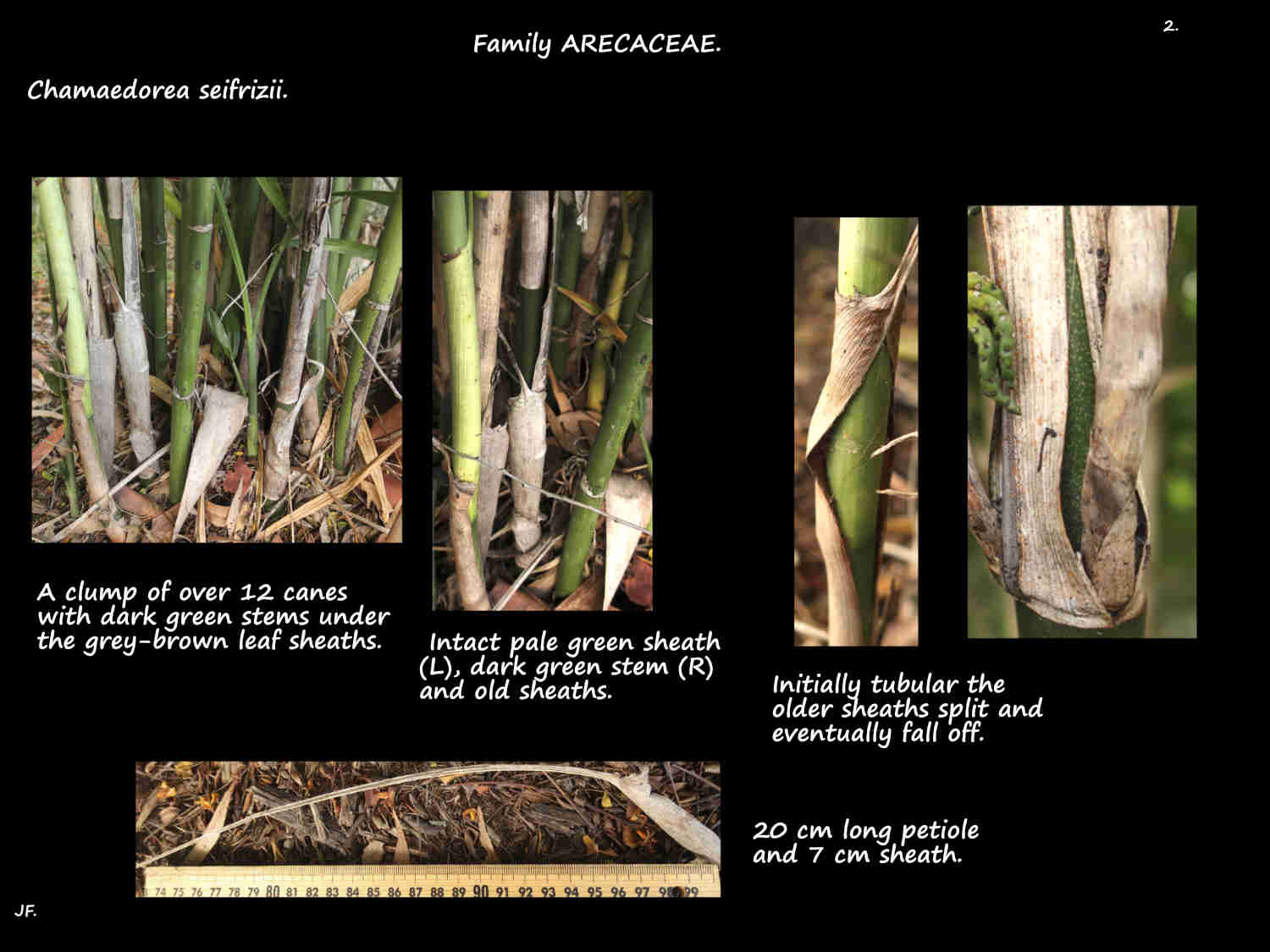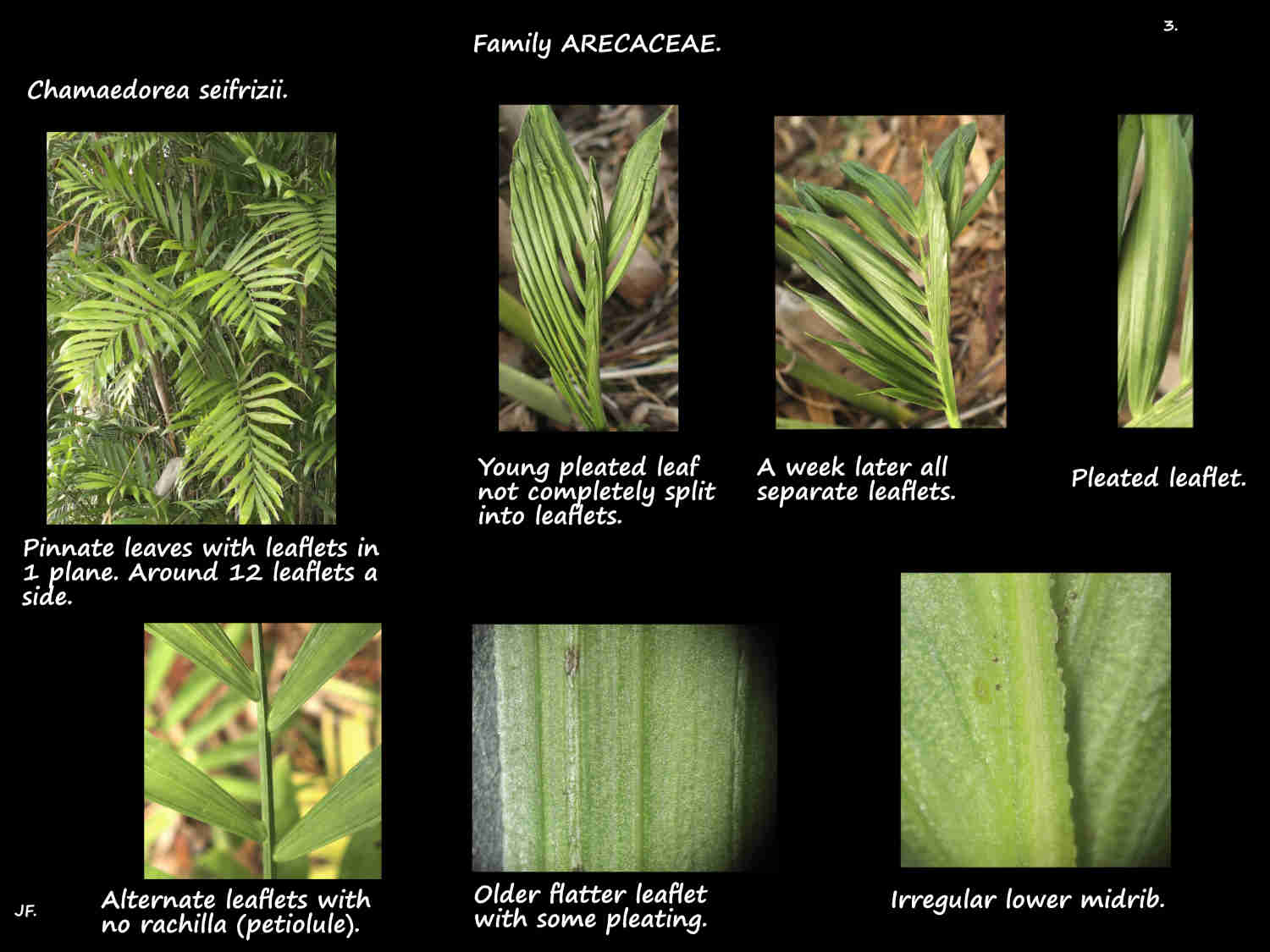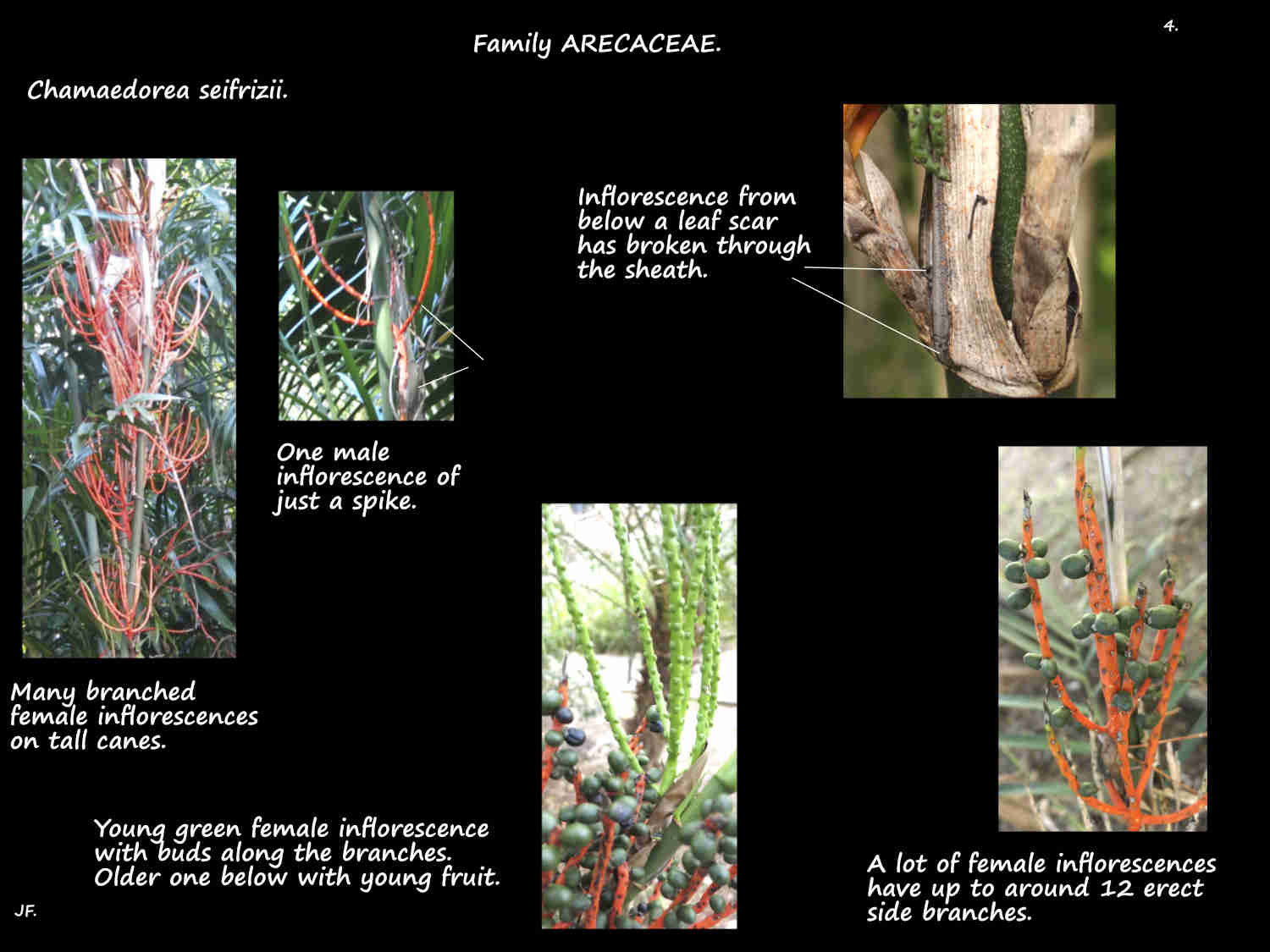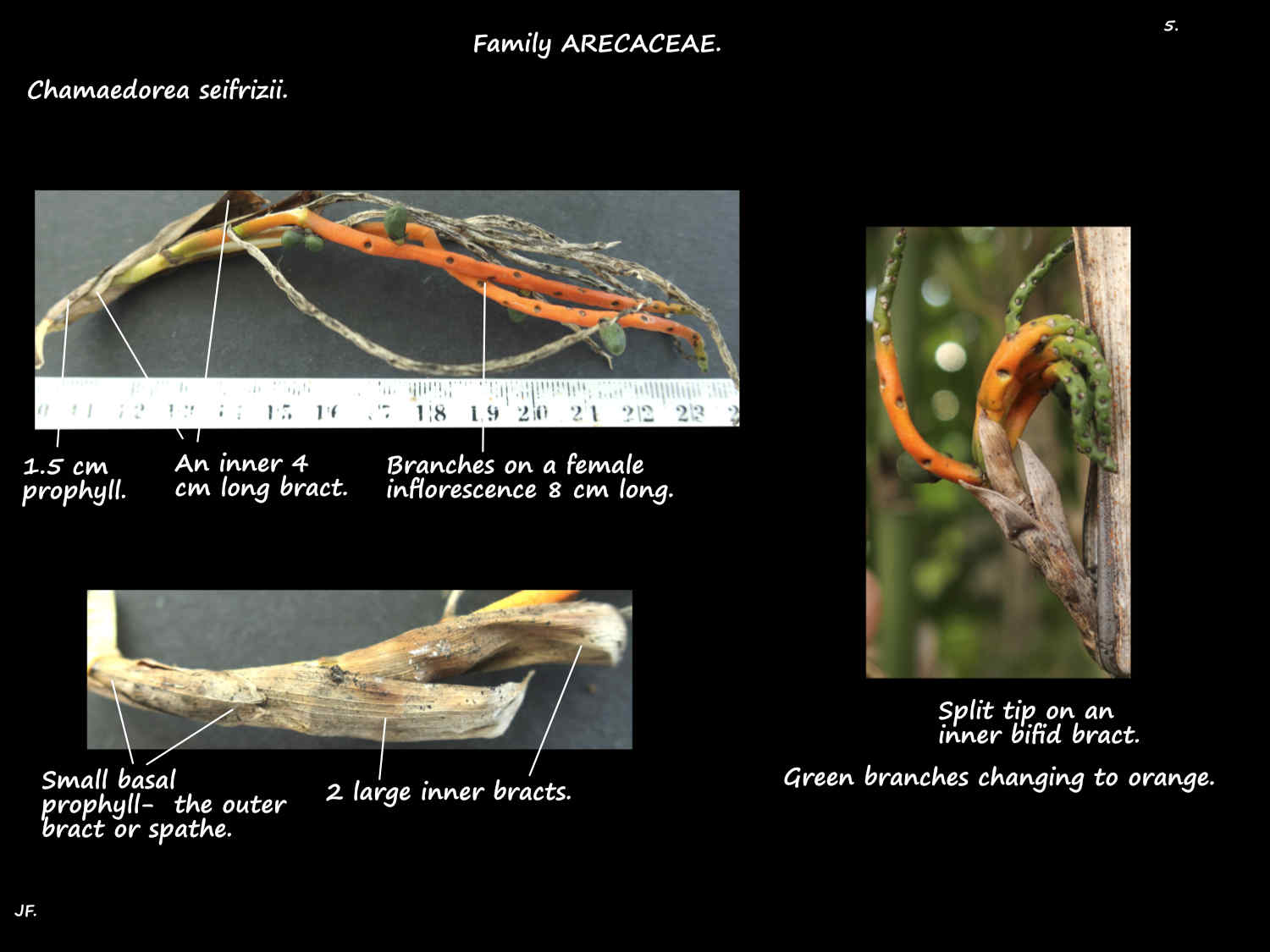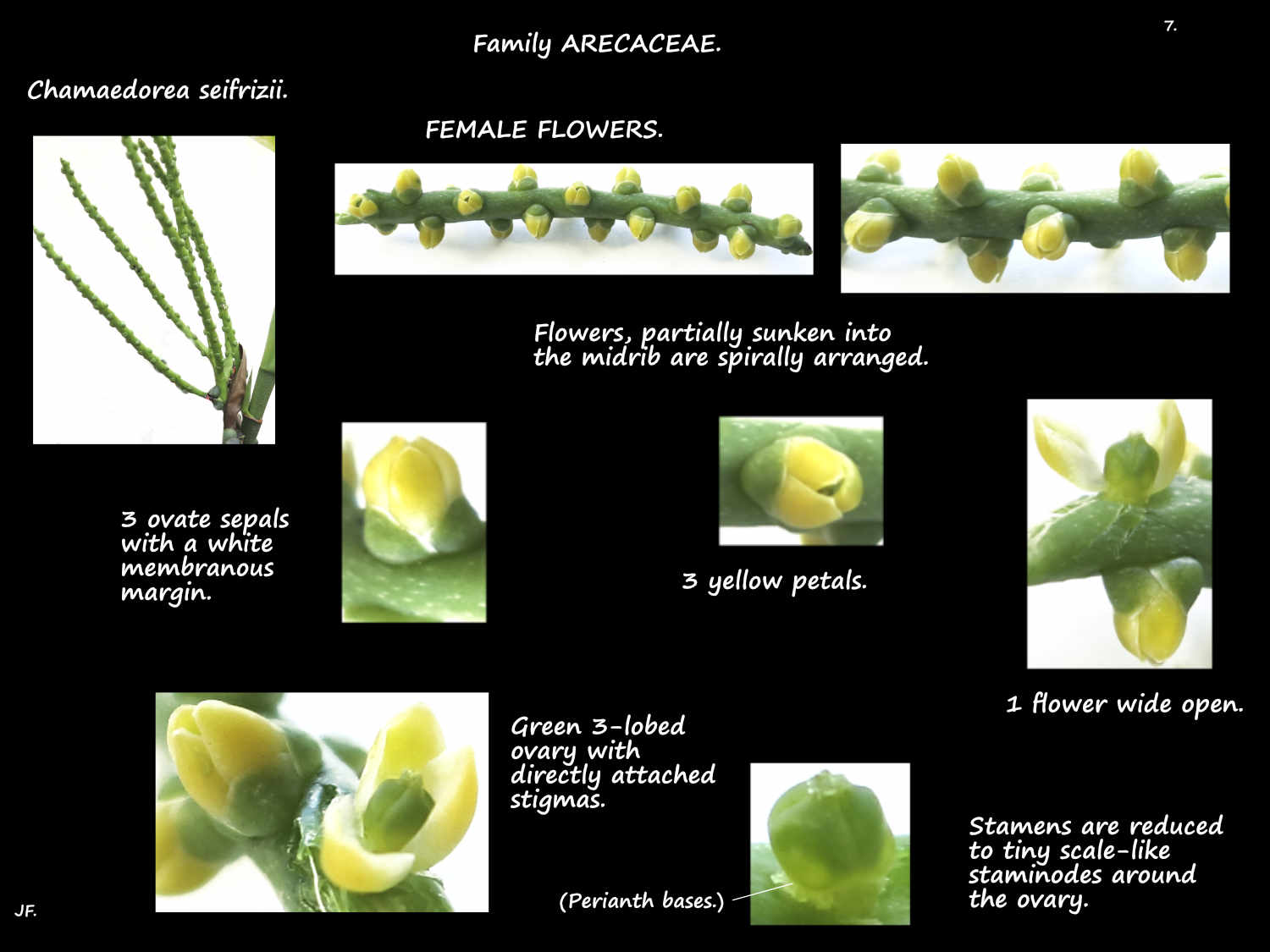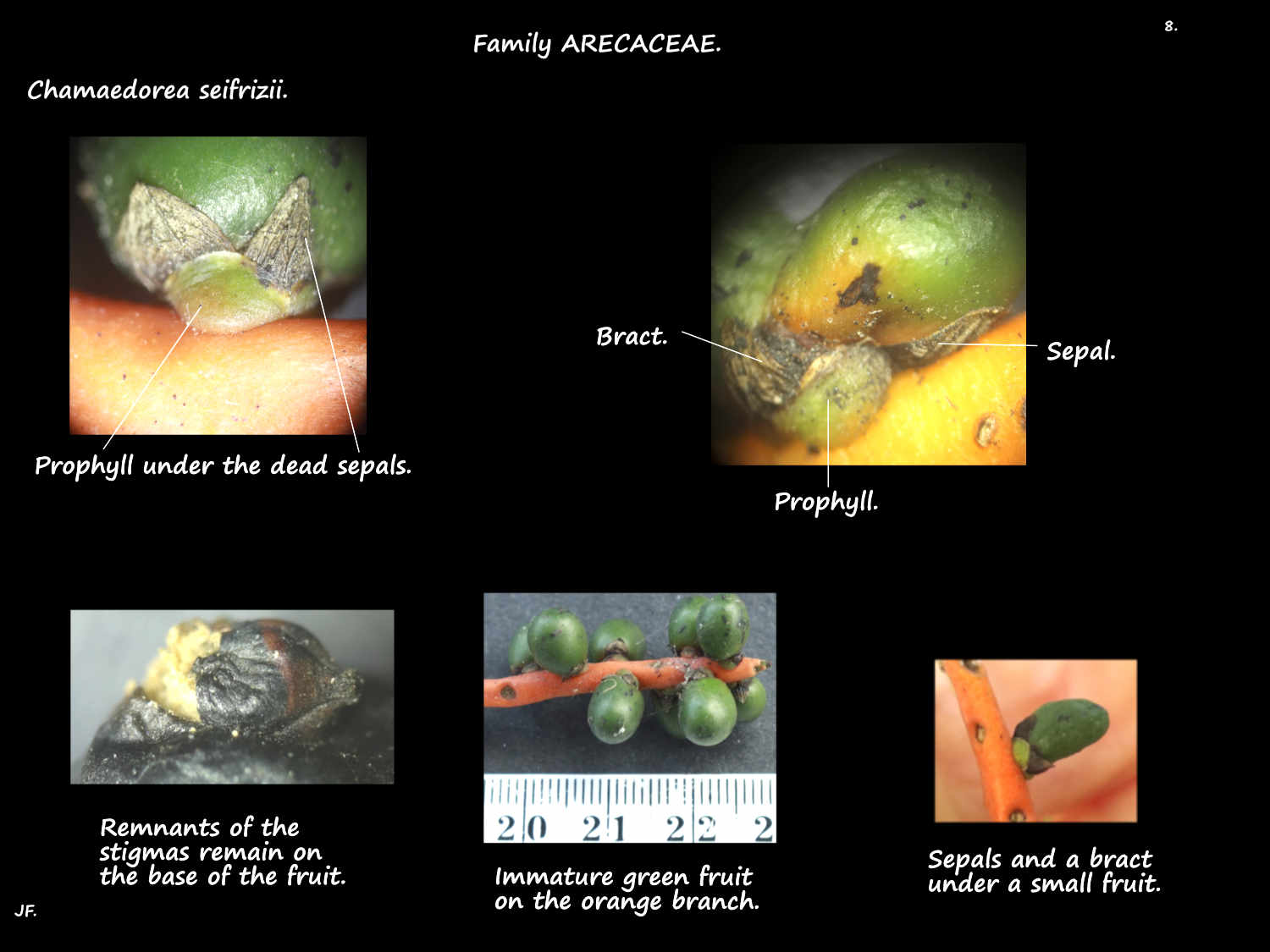The Parlour or Bamboo palm is native to Mexico.
It is fairly common in Brisbane suburbs.
It is a clumping plant growing up to around 3 m high and 1 m wide.
There can be over 40 stiff mostly erect stems or canes in a large clump.
Clumps spread by suckers or offsets.
Ring scars from fallen leaves are 10 to 20 cm apart.
Depending on the stem length each has a few up to around 15 leaves.
The evenly spaced pinnate leaves, up to 50 cm long are erect to spreading.
The petiole, up to 10 or 12 cm long has a slightly grooved upper surface.
The petiole base widens to form a closed sheath up to 30 cm long down the stem.
The sheaths often split in places or all the way down.
Older dry brown ones stay on the stem for a long time.
The petiole extends into the bade as the midrib that is up to around 40 cm long.
In cross section the midrib or rachis is angled on the upper side.
Blades have up to 18 narrow lance-shaped or linear leaflets on each side of the midrib.
They are arranged alternately to being almost opposite.
The longest median ones are up to 35 cm long.
Those at the base are down to 20 cm long and near the apex 15 cm.
Most are 2 cm or less in width but can be up to 3 cm if there are fewer leaflets.
Exceptions are the 2 terminal leaflets that can be up to 9 cm wide.
The leaflets can be horizontal off the midrib or bend down or up.
They have 1 central nerve (vein) except the terminal pair with up to 9.
Inflorescences appear along the stems arising from below the leaf bases.
They are short and stiff allowing them to break through the stem sheaths.
Male peduncles are up to around 6 cm long and the females to 8 cm or more.
Males are a spike and the females a panicle (branched).
Male and female flowers, 3 mm across are on separate plants.
Both have up to 5 similar bracts.
The lower or outer papery brown bract, the prophyll is the shortest.
The 4th is the longest and the 5th or inner one is smaller again or rudimentary.
The tips of all are bifid with 2 lobes.
Inflorescence branches are green or yellow-green with the females becoming orange.
Flowers are spirally arranged along the branches with the males more dense.
Flowers are slightly sunken into the branches.
There are 3 wide ovate green sepals joined just at the base.
Female sepals have a pale membranous edge.
The 3 ovate petals are slightly joined at the base.
Male flowers.
There are 6 stamens with filaments attached to the rudimentary ovary.
The 1 mm anthers are dorsifixed.
Female flowers.
The pale greenish-yellow thick columnar pistillode is 3 lobed.
There is no style with the stigma directly attached to the ovary.
The 6 staminodes are reduced to small scales.
Female inflorescences have flowers and fruit at the same time.
The black 8 mm fruit, on an orange branch are a drupe with 1 seed.
Under the skin there is a thin yellow fleshy layer.
Around the seed is a membrane with a network of thickened lines.
This species readily hybridises with other species and there are some cultivars.
For example the ‘Florida’ hybrid is a cross between C. seifrizii and C. erumpens.
J.F.
